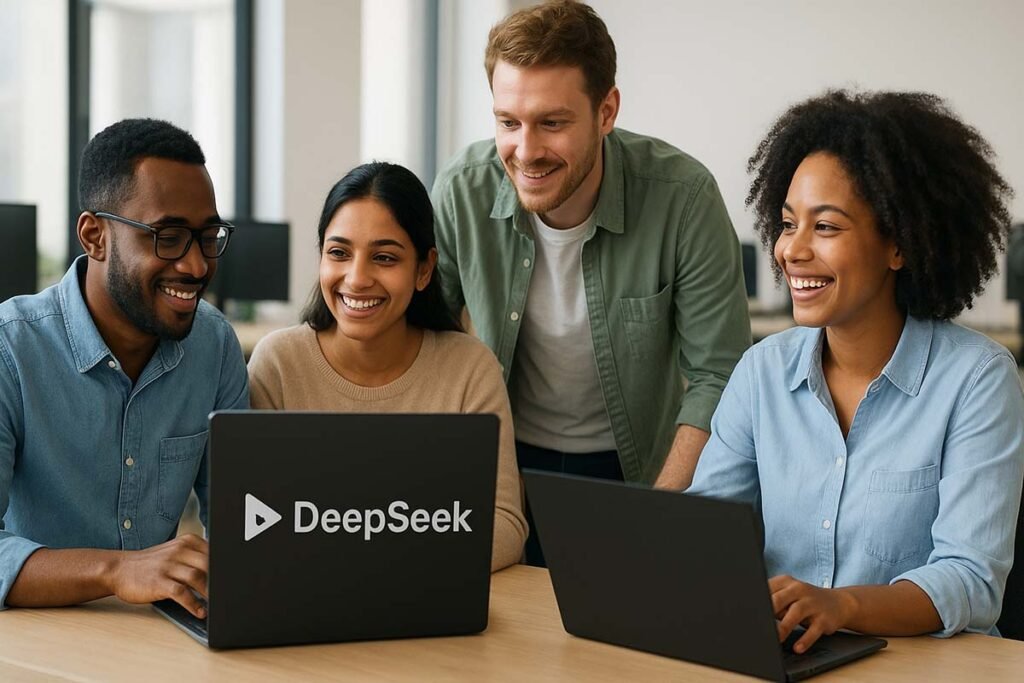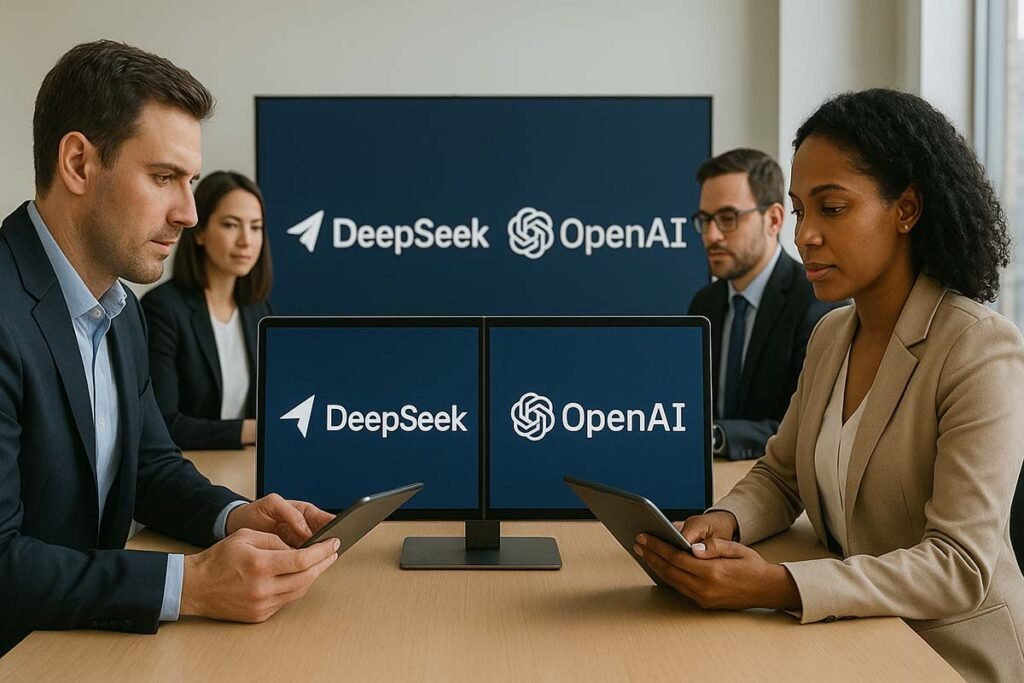When David Meets Goliath in the AI World
In early 2025, the artificial intelligence landscape shifted dramatically. For years, Silicon Valley reigned supreme, pouring hundreds of millions into large language models (LLMs) like OpenAI’s GPT series, setting the gold standard for performance, reliability, and global adoption. Yet, the arrival of DeepSeek—a nimble, cost-conscious entrant from China—took the world by surprise.
Trained for just $5.6M but matching rivals built with budgets 20 times higher, DeepSeek’s flagship R1 model ignited debate: Can smart engineering and open collaboration topple Silicon Valley’s closed, costly giants? As cost wars heat up and innovation spreads worldwide, it’s time to dissect the DeepSeek phenomenon and what it means for researchers, developers, and businesses everywhere.
The Contenders: DeepSeek R1 and OpenAI O1 at a Glance
| Model | Headquarters | Release Year | Training Cost | Open Source? | Key Features |
|---|---|---|---|---|---|
| DeepSeek R1 | Hangzhou, CN | 2025 | ~$5.6M–$6M | Yes | Mixture-of-Experts, modular |
| OpenAI O1 | San Francisco | 2024 | $80M–$100M | No | Proprietary, API-polished |
DeepSeek’s Innovative Engineering
- Mixture-of-Experts (MoE): Activates only relevant sub-models per task, reducing GPU demands.
- Modular Neural Networks: Adaptable to multiple domains—text, code, math, and more.
- Open Source Code: Available for audit, modification, and self-hosting.
- Cost per Million Tokens: $0.55 (input), $2.19 (output)—dramatically lower than OpenAI.
OpenAI’s Premium Offerings
- Proprietary Model: Managed API, tight integration with enterprise tools.
- Leading in Reasoning: Slight edge in coding/general tasks, broader support.
- Cost per Million Tokens: $15 (input), $60 (output).
Performance Head-to-Head: Benchmarks Matter
| Task Type | DeepSeek R1 | OpenAI O1 | Winner |
|---|---|---|---|
| Math Reasoning | 79.8% | 79.2% | DeepSeek R1 |
| Coding | 96.3% | 96.6% | OpenAI O1 |
| General Knowledge | 90.8% | 91.8% | OpenAI O1 |
| API Cost | $2–3 | $60+ | DeepSeek R1 |
Takeaway:
- DeepSeek R1 equals or slightly beats OpenAI O1 on advanced technical/mathematical tasks, with OpenAI keeping a small edge on coding and general knowledge.
- For price-sensitive developers, DeepSeek is the clear winner.
Real-Life Case Studies: Where Disruption Meets Impact
Case Study #1: DeepSeek in Startup Innovation
A fintech startup cut its inference costs by over 80% after switching from OpenAI to DeepSeek. The open-source foundation allowed engineers to customize algorithms for fraud detection in real time, scaling to peak loads without breaking the bank.
Case Study #2: Academia Adopts DeepSeek
A US university research group used DeepSeek for scientific paper summarization—teams reported comparable accuracy to OpenAI, with total spend less than 10% of their previous outlay. Version control and transparency made reproducibility easier, bolstering academic credibility.
Case Study #3: Enterprise Integration
A US e-commerce company tested DeepSeek’s R1 for multi-language support and mathematical reasoning in checkout workflows. They observed speed improvements and found self-hosting reduced compliance risks—critical for sectors handling sensitive data.
Why DeepSeek Is a Game Changer
1. Radical Cost Efficiency
- Trained with 2,000 Nvidia H800 units vs. OpenAI’s 16,000 H100 GPUs.
- Engineering reductions in memory, compute, and power needs.
2. Open Source and Customizable
- Immediate access for developers, startups, and researchers worldwide.
- Adaptable for edge devices and cloud-scale deployments alike.
3. Modular, Multi-Domain Adaptability
- Modular neural architecture: quick pivots between text, code, image, and audio tasks.
- Transfer learning enables rapid development for new domains (e.g., voice assistants, medical AI).
4. Supported by Chinese R&D Power
- Large ecosystem: Baidu, Tencent, Alibaba join open-source movement.
- Collaboration fuels rapid model improvements and global impact.
Expert Opinions
Naresh Mehta, CTO at TCS: “DeepSeek’s approach demonstrates a new art of the possible in building open source large language models—a more efficient way that potentially consumes a smaller amount of compute resources but still promises to deliver a mighty performance.”

The Silicon Valley Response: Adapt or Risk Irrelevance
Major US AI players reacted with shock:
- Wall Street saw $5B erased from Nvidia’s market cap in days after DeepSeek’s launch.
- Some US firms began collaborating with Chinese open-source projects—Microsoft, AWS, Nvidia onboarded DeepSeek on their platforms.
- The NASDAQ Golden Dragon Index dropped sharply as investors feared overvaluation of legacy AI infrastructure.
US–China Tech Rivalry Intensifies
- The Biden administration’s export controls sought to limit China’s access to advanced chips, but only fueled resourceful innovation.
- Trump’s Stargate initiative represents a $500B US response—aimed at retaining technological leadership.
- Meanwhile, Chinese policy doubled down on mutual tech benefit and cross-border collaboration.
Pros and Cons: Which Model Should You Choose?
The Bigger Picture: Why DeepSeek’s Disruption Matters
- Democratization of AI: Suddenly, small teams with limited budgets can run world-class models.
- Sparks R&D Competition: US firms innovate faster to stay ahead; China’s push for cost-effective excellence reshapes priorities everywhere.
- Opens the Door for Regulatory Reform: Governments can audit open-source models, reducing the risk of “black box” AI errors.
- Industry Impact: Edge computing, SaaS transformation, and low-resource deployments become feasible for mainstream businesses.
The New Rules of AI Innovation
DeepSeek’s arrival has rewritten the playbook for global AI—focusing less on brute-force spending and more on creative engineering, openness, and cost control. The disruption not only levels the competitive field but also invites collaboration, transparency, and smarter resource allocation across the industry. Whether you’re an AI researcher, a business leader, or a curious tech enthusiast, the message is clear: The future belongs to those who build smarter, not just bigger.
Looking ahead, will Silicon Valley adapt or double down on premium exclusivity? Will China’s open innovation become the new standard worldwide? One thing’s certain—the age of DeepSeek has put the world’s brightest minds on notice.
FAQ: DeepSeek vs OpenAI
Q1. What is DeepSeek and how does it differ from OpenAI?
DeepSeek is an open-source AI model from China, trained for a fraction of OpenAI’s cost. OpenAI’s proprietary models offer polished APIs with broader enterprise integration.
Q2. Which model is better for startups and small businesses?
DeepSeek is ideal for cost-effective deployments and self-hosting, while OpenAI is suited for enterprises needing out-of-the-box integrations.
Q3. Is DeepSeek truly competitive with OpenAI on benchmarks?
Yes, DeepSeek matches or slightly surpasses OpenAI on math reasoning tasks; OpenAI remains slightly ahead in coding and general knowledge.
Q4. Why does DeepSeek cost so much less to train?
Efficient architecture (MoE), optimized memory use, and targeted training strategies cut hardware and energy requirements.
Q5. Can DeepSeek’s open-source model be customized?
Yes—developers can audit, modify, and tailor the model for specific needs, unlike OpenAI’s closed system.
Q6. Are there concerns about security or reliability?
Open-source models require careful management to ensure reliability and compliance; OpenAI’s managed service addresses this for large firms.
Q7. Who supports DeepSeek’s development?
China’s top tech firms, hedge funds, and a vibrant open-source community contribute actively to improvements.
Q8. Will US and Chinese AI models continue to diverge?
Likely—trade restrictions, divergent ecosystems, and differing regulation are fueling parallel innovation in both regions.




Pingback: Edge AI Revolution: Why Your Smartphone Will Soon Be Smarter Than the Cloud - FirstsPost